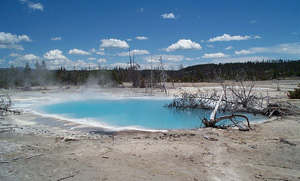Sulfolobus
is part of the Archaea kingdom -- a single-cell organism similar to bacteria --
which was isolated in hot springs on the island of Hokkaido, Japan.
Some
Archaea live ordinary lives in mundane environments such as lakes, seas and
insect and mammal intestinal tracts, while others live extraordinary lives
pushed to extremes in incredibly harsh habitats such as deep sea hydrothermal
vents, volcanic mud and the Dead Sea.
Archaea
have been instrumental in evolutionary studies on the origins of life and have
revealed to scientists that the boundaries of life as we know it can be pushed
much further than previously thought.
For
details about the organisms:
M.
A. Schumacher, N. K. Tonthat, J. Lee, F. A. Rodriguez-Castaneda, N. B. Chinnam,
A. K. Kalliomaa-Sanford, I. W. Ng, M. T. Barge, P. L. R. Shaw, D. Barilla.
Structures of archaeal DNA segregation machinery reveal bacterial and
eukaryotic linkages. Science, 2015;
349 (6252): 1120 DOI: 10.1126/science.aaa9046
Posted by Tim Sandle



No comments:
Post a Comment
Pharmaceutical Microbiology Resources